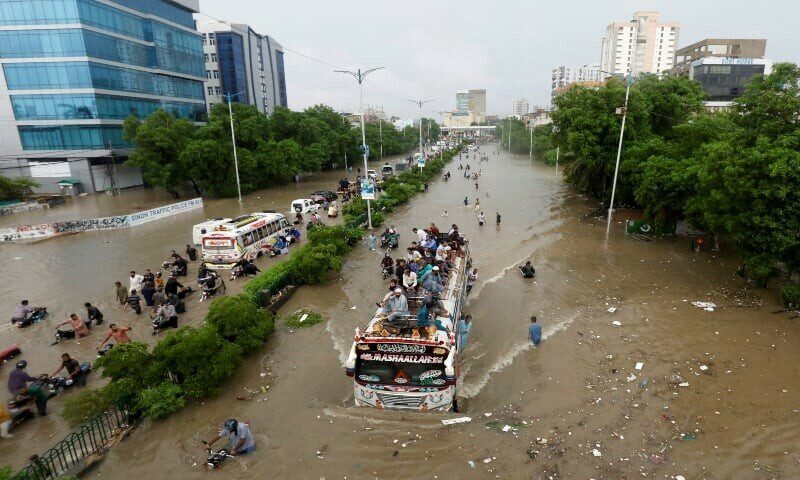Karachi’s Rainy Day Blues: Urban Flooding Hits Property Sector Amid Infrastructure Woes

Introduction
Karachi woke up to its familiar monsoon challenge—intense rain showers continuing today, bringing back memories of urban flooding and market disruptions. With storms and thunderstorms forecast throughout the afternoon, key commercial areas are already feeling the strain. But amid the chaos lies a compelling narrative: how real estate and infrastructure resilience are finally becoming central to Karachi’s future stability.
1. Immediate Impacts: Flooded Markets & Stalled Trade
Torrential rain has caused widespread damage to businesses, hitting traders in Karachi hard. Initial reports estimate losses between Rs14–15 billion, spanning damaged inventory, flooded shops, and halted operations across major markets. Areas like Orangi, Malir, Korangi, and even upscale DHA saw waterlogged goods and shuttered storefronts. Beyond business, power outages exceeding 24 hours are compounding the crisis—prolonged blackouts crippling both residential and industrial activity.
DawnBusiness Recorder
2. Why Karachi Floods So Easily
Karachi’s urban form magnifies flood risk. High-density development, impermeable surfaces, and a broken drainage system have turned moderate rain into widespread chaos. When drains clog with trash—and rainwater has nowhere to go—every shopping avenue, roadway, and residential street turns into a hazard zone. Experts point to weak urban planning and climate change as key drivers making floods more frequent and more severe.
Dawnarchitimesonline.com
3. Real Estate Resilience Through Design
Flood-resistant real estate is not a lofty concept—it’s becoming a must-have. Communities like Bahria Town Karachi, with robust drainage systems and competent water waste infrastructure, weather the storms better, safeguarding property values and reducing damage. Some buyers are already leaning toward such resilient enclaves, seeing them as safer, longer-term investments that can withstand urban flooding.
redbox.estate
4. Building a Flood-Smart City: Next Steps
As climate change intensifies urban weather risks, Karachi needs infrastructure transformation. Experts recommend:
Permeable pavements, urban reforestation, and green roofs
Enhanced drainage maintenance, free of encroachments and blockages
Smarter zoning: avoiding construction in flood-prone areas
Promotion of climate-smart real estate design—resilient materials, elevated foundations, water-conscious landscaping
Private developers, resistant to short-term pushback, can lead this change through ESG-based investments and safer design protocols.
DawnThe News InternationalThe Nation
5. What’s Next for Propverge Audience
For developers and investors, today’s rains underscore a critical insight: urban resilience can protect—and even enhance—property value. Prioritizing structurally sound, flood-mitigated complexes can attract higher price premiums and lower insurance costs. Meanwhile, city planners and local governments must heed these recurring warnings, upgrading stormwater systems and enforcing flood-smart construction norms.
As Karachi continues to rain, the demand for climate-aware developments will only grow — offering a timely window for forward-thinking real estate actors.
Conclusion
Karachi’s latest rainy chaos is not just another weather story—it’s a wake-up call for the city’s infrastructure and property sectors. Heavy rainfall today is a stark reminder: without resilience, every investment remains vulnerable. But for those ready to adapt—through better design, smart drainage, or flood-resilient planning—comes not just protection, but a competitive edge. Real estate that weathers the monsoon is no longer optional—it’s essential.


